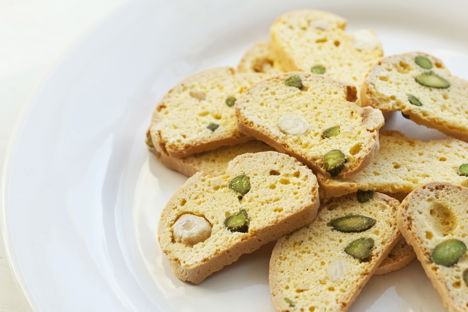The word biscotti derives from the Medieval Latin for ‘twice baked’ as this biscuit is traditionally cooked, sliced and cooked again. This makes for a crunchy finished biscuit that travels well and can be kept in an airtight container for up to two weeks.
Metric
Imperial
- 2 eggs
- 160g of caster sugar
- 300g of plain flour
- 1 tsp baking powder
- 140g of whole almonds, roughly chopped
Variations
Almonds are the most traditional addition to biscotti but most nuts work well, especially hazelnuts, pistachios and macadamia nuts. Nut allergy sufferers could try pumpkin seeds or desiccated coconut.
Fruit also works well in biscotti; try grating lemon or orange zest into the dough or folding through candied peel. Cranberries and raisins or dried fruit such as figs and apricots are a welcome addition.
Try adding spices such as star anise and cinnamon or, for an English twist, add lavender.
For something a little more special, add a good glug of amaretto to the dough and dip the finished biscuits in melted chocolate.
Serving suggestions
Biscotti are great for dunking in tea and coffee at breakfast or for elevenses. In Italy they dip biscotti into Vin Santo, a type of sweet wine. Adam Byatt adds cranberries and pistachios to his biscotti while Urvashi Roe goes for chocolate and hazelnut.
Get in touch
Please sign in or register to send a comment to Great British Chefs.



